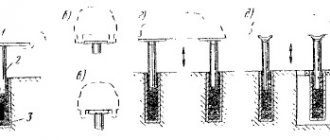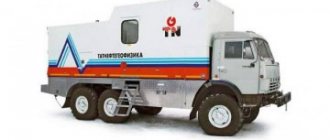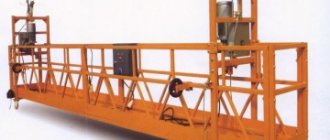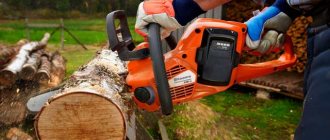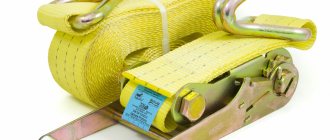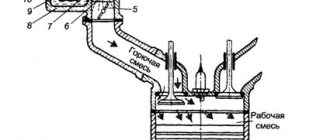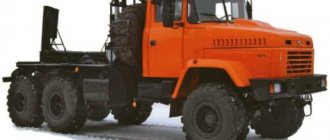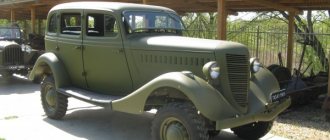Description
Hydraulic lifts are specialized technical devices that are used to lift loads to a certain height. Such mechanisms are involved in different areas. Hydraulic lifts are used in industrial facilities, warehouses, auto repair shops and construction sites. These technical devices differ from each other in design features and other characteristics. But regardless of the type, all such lifts operate thanks to a built-in hydraulic drive.
Working principle of hydraulic lift
These technical devices raise and lower loads thanks to fluid pressure, which creates the force necessary to move the platform.
Hydraulic lifts stand out from similar devices with a different operating principle in several ways:
- the fluid pressure in such devices is sufficient to lift large and heavy loads;
- the working platform rises and falls slowly and smoothly, preventing the load from accidentally falling;
- wide variety of designs.
The latter feature allows you to select a hydraulic lift that fully meets specific tasks and meets operating conditions.
Electromechanical lift-tilter
The electromechanical lift-tipper shown in the figure allows you to tilt the car at various angles, but not more than 60°.
Rice. Electromechanical tipper: 1 - stand; 2 — lifting frame; 3 — car fastening clamp; 4 - carriage; 5 - fixed frame
The lifting frame is driven by an electric motor with a worm gear and a screw with a nut located in the rack. When using a tipper, you must first remove the battery from the vehicle and seal the holes in the master brake cylinder and the neck of the engine crankcase and fuel tank.
Types of structures
Depending on the design features, hydraulic lifts are divided into the following types:
- Console. The design of hydraulic lifts of this type provides for 2 vertically oriented guides along which the loading platform moves, driven by the pressure of hydraulic cylinders. Such models are compact in size. Cantilever hydraulic platforms are capable of lifting over four tons of cargo.
- Scissor type (lift table). Universal models with a platform driven by a drive system. The latter is formed from crossed and interconnected metal slats or beams. Scissor-type devices are distinguished by enviable technical characteristics. These models are capable of lifting loads weighing up to 15 tons to a height of up to 18 meters. Thanks to this feature, scissor-type devices have found application in many areas. But more often, lifts are used in warehouses, production or during construction.
- Telescopic. The loading platform for models of this type rises along vertical posts under the pressure of the working fluid. Telescopic hydraulic lifts are also used in a variety of applications, including service stations and construction sites. These devices are available in different configurations, from compact to powerful models capable of lifting up to 15 tons to a height of 12 meters.
In addition to the above, there are highly specialized types of hydraulic lifts on the market:
- Lifting platforms. These devices are mainly used for lifting and lowering heavy and bulky cargo. Lifting racks are mainly used in warehouse, industrial or retail facilities.
- Low profile lift tables. When fully lowered, the platforms of these devices form a flat surface with the floor. This feature makes loading heavy items easier.
- Inclined hydraulic lifts. One of the types of overpasses, which is used for driving cars onto various hills. Also, models of this type can be used to adjust the angle of inclination of the working platform, tilting heavy loads, moving carts and other purposes.
How to make it yourself
You can make a cantilever lift with your own hands. First, drawings of the main components of the mechanism are made, indicating the dimensions of the parts. This design consists of three inclined supports located at an angle of 70º. The axles are connected to each other at the top. An inclined support is made from a rectangular metal pipe measuring 30x50x2 mm. The lower edge of the pipe is cut at an angle of 70º and a metal plate (support paw) measuring 5x130x150 mm is welded to it.
A through hole with a diameter of 14 mm is drilled in the plate. The upper assembly consists of a thrust plate and a guide clamp. These parts need to be welded together. The thrust plate is made of metal sheet. The guide clamp is made from a rectangular metal pipe measuring 40x60x5 mm. The lift should have a height of 3098 mm, the distance between the centers of the holes of the support legs should be 2280 mm. Such a unit will have a load capacity of 850 kg.
To manufacture the device, install an M20 bolt in the hole of the upper unit and secure it with an M20 nut. Then the supports are installed in the guide clamps. Then the axle is installed in the holes of the clamps and supports and clamped on both sides with M12 nuts. The supports need to be separated. Then the tripod is placed on the ground. Steel crutches are hammered into the holes of the support legs. A chain hoist with a lifting capacity of 850 kg is hung on the bolt.
A manual cable winch with a lifting capacity of 200 kg is installed on the support. Install the hook, carabiner and cable. A load is suspended from the gripping element and the pulley. Apply force to the winch and lift the load. The structure is ready, it needs to be checked for functionality and the strength of fastening of the connections. If everything is in order, then the cantilever lift is installed in the required location and the structure is tested to lift the load. After this you can start using it.
Application area
According to the area of application, hydraulic lifts are divided into the following types:
- For multi-level parking. Here, lifts are used to transport cars to and from the parking lot to road level.
- For service stations. In this case, the devices are used to lift the machine to the level necessary for free access to the node units under the bottom.
- For construction and renovation work indoors. Models of this type are compact in size and highly mobile. Such lifts are equipped with a platform, the dimensions of which are sufficient to accommodate people and tools.
- For warehouses. Lifts of this type are mainly characterized by their compact size and high mobility.
- For industrial workshops. The most powerful lifts are used here, designed to move loads weighing several tens of tons.
- For loading on planes and trains. Lifts of this type are equipped with an open or closed platform.
Types and design of freight lifts
Types of cargo lifts
Freight lifts have been used everywhere for many years. They are used on construction sites, factories, and warehouses. Over time, they began to specialize for more specific tasks - mast, two-mast, hydraulic platform, mine and for the disabled. Mast ones are very often used on construction sites; they have a simple design and are easy to install. Two-masts are a structure consisting of a cargo platform between two masts. Unlike mast ones, they are more load-bearing and less demanding on the installation site. The mine lift can only be used in a mine of suitable size. It can be assembled independently from rolled metal or other materials. If you have a ready-made shaft, then the lift can be installed in it. Separately, hydraulic lifting platforms or hydraulic tables can be distinguished.
Construction of cargo lifts
A mast lift is the simplest and most convenient option. It is not picky about the environment and to work it requires a strong pit and a wall to attach the mast. At the pit site, the soil is strengthened and a concrete base is made, then its base and loading platform are assembled. The mast is assembled from ready-made blocks to the required height and attached to the wall. There are several different types of hoist propulsion system layouts, and they can be placed on either the top or bottom.
Due to the additional mast, a two-mast lift can also be placed in an open place. This allows the use of cabins of various shapes, up to two-story options. The lifting mechanism is placed on top of the structure, similar to an elevator. This type of lift differs from the mast type by the presence of an additional mast and a different cabin arrangement.
A mine cargo lift consists of a shaft in which it moves and a loading platform. The shaft can be made of brick, concrete or metal structures. It can also serve as a supporting structure.
A hydraulic lift table or scissor lift consists of a base, scissor mechanism, hydraulic cylinders and oil tank, and a loading platform. Its design is as simple and convenient as possible. Such hydraulic tables can lift impressive weights, but they are limited to a small lifting height, usually a few meters.
How to buy a cargo lift
GC Podem is a manufacturer of cargo lifts; in addition, we have been supplying and installing lifting equipment for more than 8 years. We have extensive experience with fork lifts and can custom design to your specifications. In order to order a cargo lift from us, you need to fill out the feedback form on our official website.
Scissor lifts
Perhaps the most functional lifting devices today, characterized by maximum ease of operation, small dimensions, good load capacity and low price. In this design, the hydraulic drive drives the lever system, which is shaped like scissors; moving along special grooves towards each other, they thereby straighten and lift the working platform with a load:
- the matter is rarely limited to scissors alone, since they often cannot provide the required lifting height - for example, when storing goods on the upper shelves of shelving structures. Lifts with two, three, four and five scissors are manufactured especially for this purpose, which can operate at significantly higher heights, although with less reliability. As for reliability, there are designs with a parallel arrangement of scissors (for lifting one or even several platforms), the use of which, although not conducive to working at height, provides additional stability and load-carrying capacity of the device;
- Scissor lifts can also be stationary or mobile. Stationary ones are mounted directly into the floor for long-term use in one place - for example, servicing a specific loading and unloading area. Mobile ones - they are also called hydraulic carts - can quickly move around the enterprise, which is especially convenient when there are a large number of work areas or extended storage systems.
Scissor lift
We recommend to buy
More on the topic: When is a façade lift used?
Mast
The mast mechanism of the lift is based on a vertically located lattice base. The load-bearing devices move along this base. The mast mechanism includes 1 or more matches installed vertically or at an angle. First, the mast is attached to the elements of the building under construction. Its length increases as the work progresses. Stationary mast lifts in construction are most often used during facade work, as well as for lifting loads weighing from 250 kg to 3 tons to a height, and moving employees.
Set of documents for the lift
In accordance with paragraphs. 1 and 2 tbsp. 456 of the Civil Code of the Russian Federation, the seller is obliged to transfer to the buyer the goods provided for in the purchase and sale agreement. Unless otherwise provided by the purchase and sale agreement, the seller is obliged, simultaneously with the transfer of the goods, to transfer to the buyer its accessories, as well as related documents (technical passport, quality certificate, operating instructions, etc.), provided for by law, other legal acts or agreement.
Lifting and transport equipment, including construction hoists, is subject to mandatory certification and must meet the requirements of TR CU 010/2011 (see Fig. 3).
The validity period of the certificate of conformity for serial products is no more than 5 years.
You can check the authenticity of the certificate on the website of the Federal Agency for Accreditation [4] (see Fig. 4)
Facade construction lifts
The lifting capacity of the façade lift varies between 200-800kg. The value of this indicator is influenced by the number of places provided for in the technical documentation (one or two). Mast lifts can withstand loads of up to 1000 kg, but are significantly inferior in terms of maximum lifting height.
So for 1000kg. a two-mast construction lift has a maximum height of only 27 m, while a façade lift rises to a maximum height of 160 m. The maximum lifting speed of a facade lift is 9.6 m/min, and a mast lift is up to 15 m/min. Of course, the total weight of the façade lift structure is 1.5-2 times lighter than that of a mast lift.
The price of construction lifts is determined based on the performance characteristics and type of lift. This is a single-seat façade lift with a load capacity of up to 120 kg. will cost 130,000 rubles, and a double one with a load capacity of up to 500 kg. at 250,000 rubles.
Mast lifts are approximately in the same price category as their “brothers”. This is the price for a mast lift with a lifting capacity of 500 kg. will be 170,000 rubles. In this case, the higher the lifting capacity, the higher the price, so the cost of a mast lift with a lifting capacity of 3000 kg. increases to 500,000 rubles.
